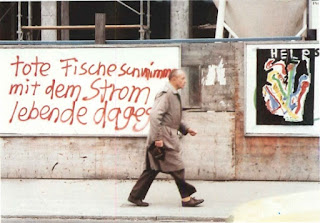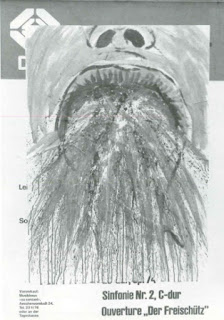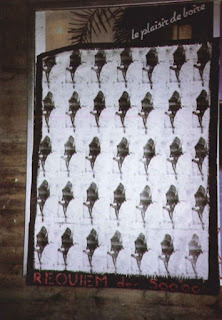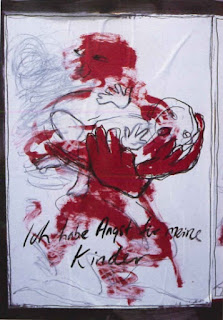Dr Great Art Podcast. Episode 32: Telltales Show. The Telltale Project, an Exhibition in NYC Concerning the Problems of History and Art Histories. How is history constructed? Who makes history? And what will remain in the future from us and our culture? What is the truth? What is fabrication? Isn’t a well-told tale more exciting than simple data and facts? Facts are extremely important. Not everything goes --- yet all facts and sources of facts must be closely examined and often criticized. (Art) HistorIES. A show at Central Booking Art Space, NYC, by Mark Staff Brandl and Alex Meszmer/Reto Mueller
http://
#arthistory #CentralBooking #history #TemporaryMuseumPfyn
Here is the script.
----------------------------------------------------
Dr Great Art Podcast 32
Tell Tales Show
Hi this is Mark Staff Brandl, with the 32nd "Dr Great Art" brief podcast.
My artecdote this time is a description of and invitation to the show I have with the artist duo Meszmer/Mueller in the Central Booking Art Space in New York City. A bit of self-advertising here, yet also an interesting idea for an exhibition, I believe. I hope you enjoy it.
We call it "The Telltale Project" or alternately, "Tell Tales." I'll use both here.
The Telltale Project is an exhibition in the OffLINE space of Central Booking, featuring Mark Staff Brandl, who is here known as "Dr Great Art," or "me"," as you know, and the Transitory Museum of Pfyn, which is the artist duo Alex Meszmer and Reto Mueller.
It runs from the 5th – 25th March 2018.
The Opening, or Vernissage as we say in Europe, is the 8th of March, 2018, 6 pm.
There will also be a Presentation by Meszmer/Mueller titled Tales of a Village, the Titanic and 6000 years, on the 15th of March 2018.
If you live anywhere nearby, please come! See you there! Wir freuen uns auf Ihren Besuch!
Now on to the meat of the show:
It includes artworks by Meszmer/Mueller and me consisting of a wall installation arrangement concerning the problems of the tales of art history by me, and installations that relate stories about "Heimat/homeland" by Meszmer/Mueller.
'Telltale' has a variety of related meanings and can be translated in several ways. 'Telltale' can mean a gossiper, a snitch or it can suggest that something is suspicious, revealing or has been exposed. It can mean a device or system which is an indicator, signal, or sign. "To tell a tale," means to narrate a story, one which could be a fable or a fairytale, perhaps even that the storyteller is pulling someone's leg.
Questions therefore arise: What is the truth? What is fabrication? Are these differentiations important? Isn’t a well-told tale more exciting than simple data and facts? Facts are extremely important. Not everything goes --- yet all facts and sources of facts must be closely examined and often criticized.
'Telltale' as a term is also reminiscent of "telling tall tales." Tall tales are an important element of American folk literature, beginning with the obviously larger-than-life bragging contests in the frontier west, several made famous by Mark Twain. These stories concern unbelievable occurrences, related as if they were true, yet told with a wink. The exaggerations make it clear to the audience that the supposedly truthful narrator knows that they know he is lying for entertainment value.
This brings to mind the far more pernicious notion of 'fake news' being bandied about recently: lies spread in the media for propagandistic reasons, and even more appalling, the creators of those lies claiming them to be true while deceitfully claiming all actual facts and other opinions are the 'fake news.' The complete Goebbelsesque inversion!
All of these meanings play into the artworks by Dr Great Art Brandl and Temporary Museum Meszmer/Müller.
Stories and history have been the center of Alex Meszmer and Reto Mueller’s art for years. The center of origin and vital reference point for the artists is the village of Pfyn and the house where the two artists reside; the house itself was built on the remains of the foundations of the ancient city walls of the Roman colonial castrum Ad Fines. They live in a house surrounded, even supported, by history. The ask themselves: how is history constructed? Who makes history? And what will remain in the future from us and our culture?
For The Telltale Project Meszmer/Mueller further developed their installation No Fairer Land / Kein schöner Land. This an installation of found landscape paintings refashioned into pillows with a soundtrack of songs of their homeland hummed by people of various nationalities, i.e. 'Heimatlieder' as they are called in German. They will also be showing their Family Album / Familienalbum, comprised of manipulated photographs enabling different perspectives on gender relations or marriage for those in the past. Additionally, a video-installation of history and stories of Pfyn, Thurgovia, Switzerland, will be in the exhibition. Incidentally, Meszmer is German with Switzerland as his chosen home, Mueller is an original Swiss, and I am a German-American from Chicago as well as a naturalized Swiss citizen. All three of us have lived in a variety of countries and with a variety of other cultures, which clearly affects our views on the world.
My art, Mark Staff Brandl’s artwork, revolves around a project concerning art histories (purposefully in the plural), their creation, reception and usefulness for us today. In performance-lectures and related installations and podcasts, as you my listeners know, I takes viewers and listeners on hopefully fascinating journeys through art and its history. Entertainingly, yet educationally and aesthetically I analyze and discuss the reasons why a work of art is great, or through entire eras, or specific questions and problems in art and cultural history, or indeed through the entirety of art history. When they are lecture-performances, they usually take place with painted background screens and even in my entire painting-installations.
For The Telltale project, I created a wall installation which centers on the history of art history. It concerns the often "missing" elements, people and cultures within it; and the creation of a more open, expansive, inclusive and self-critical model of art history and the teaching of art history. Not a master narrative, but rather models (listen about that difference in the Dr Great Art podcast Nr. 27).
My piece includes two large hand-drawn and painted visual compendiums of art history — one the more-or-less-standard one, but images only. The other is all and exclusively women artists. Both pieces cover from prehistory through Postmodernism. Also included is a self-portrait print with all word-bearing, critical, "Covers" paintings that feature in my theme song, Shut Up and Paint by the Handcuffs, a tiny portion of which begins and end each of these podcasts. In my portion of the show, there is also a hand-drawn, braid-like image of a complex, intertwined model of the art history time line; one which is under constant revision, a work in progress created by me and my students; several additional related prints; a book comprised of drawings representing holes in art history discovered while teaching it; and a sequential, comic-like object, presenting a tale concerning the love-hate behind visiting contemporary art fairs and biennales, drawn on the backs of entry badges for Basel Art Fair, documenta, the Venice Biennale and the like. The object was created in collaboration with the great London art critic, author and artist Matthew Collings.
Oh yeah, the major shout outs! The Telltale Project is supported by:

Kulturstiftung des Kantons Thurgau
and
Kulturförderung Appenzell Ausserrhoden

And of course the wonderful Maddy Rosenberg, artist and director of Central Booking! Thanks again Maddy and Will!
Thanks for listening. Podcast number 32.
Tell Tales Art Show
If you wish to hear more cool, exciting and hopefully inspiring stuff about art history and art, come back for more. Also I, Dr Mark Staff Brandl, artist and art historian, am available for live custom Performance-Lectures. In English und auf Deutsch.
You can find or contact me at
www.drgreatart.com/ (spell)
book me at www.mirjamhadorn.com (spell) or find me on Facebook, Twitter, Instagram, all as Dr Great Art.






































































































